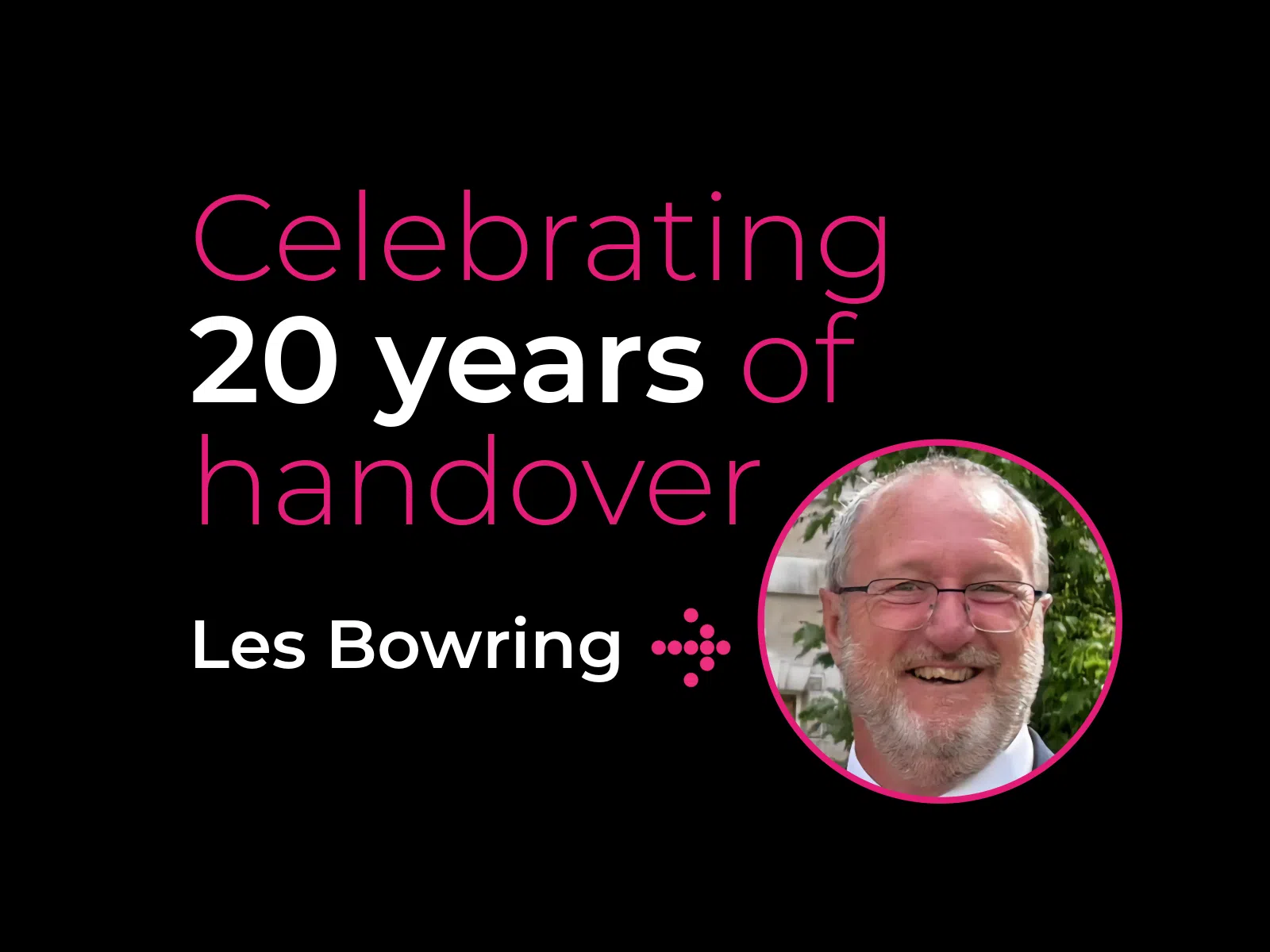
Company Updates:
From lever arch files to the cloud: Reflecting on 20 years of handover
Les Bowring reflects on 20 years at EDocuments, from printed manuals to digital handover platforms and how technology, teamwork and trust have shaped his journey.

Celebrating 20 years of handover
In 2005, Les Bowring joined EDocuments as a project manager. At the time, digital handover was in its infancy. Most clients still expected printed documents and hyperlinks in Word files were considered cutting-edge.
Fast forward two decades and Les has seen not just the evolution of handover, but the transformation of an industry and a business that he’s proud to still be a part of.
To mark Les’s 20th anniversary, he shares how the world of O&M manuals has changed, why digital transformation is about more than just tech and what’s kept him at the company through it all.
A very different beginning
After working in furniture manufacturing and quality control, a chance encounter in Chelmsford pointed him toward a small company called EDocuments.
“I remember thinking, what have I got to lose?” he says. “I met Jamie and Lester, got offered the job and I never looked back.”
His first role was technically “project manager,” but the title barely captured the scope of the role. Les was responsible for every part of the handover process: collecting documents from contractors, formatting them manually, hyperlinking Word documents and converting files to PDF.
“Back then most contractors considered that the bigger the manual, the better. If you had a hundred pages but only ten of them were useful, that was normal.”
From manual to meaningful
Today, the world of handover couldn’t be more different. Where once delivery was about volume and presentation, now it’s about structure, usability and data integrity. That shift hasn’t happened overnight, and Les has had a front-row seat for the evolution.
“A lot of what we did in the early days was just taking what the contractors gave us and making it look presentable. But there was no consistency or structure. The idea of aligning to asset data standards or thinking about how an FM team might use the information wasn’t on the radar back then.”
Technology played a huge role in changing this. The EDocuments platform has evolved over time to streamline tasks that used to take hours. Features like auto-indexing and searchable schedules cut down repetitive manual work and allowed the team to focus on quality, not just quantity.
And client expectations have changed too. “End users started to realise they didn’t just want a manual, they wanted information they could actually use,” Les explains. “They expected to be able to search, filter and find what they needed without trawling through a thousand-page PDF.”
Learning through experience
While technology has been a game-changer, Les believes it’s the people that make the real difference. That goes for the clients and the team.
“I’ve worked with schools, hospitals, councils and developers. Some are very forward-thinking, others are a bit stuck in their ways. But what’s interesting is how much people’s expectations have caught up. Once, a caretaker might have asked for a lever arch file to put on a shelf. Now, they expect digital access. It’s not futuristic anymore. It’s just normal.”
Les also credits the directors at EDocuments for fostering a culture where people feel supported and valued.
“I’ve never felt like just a number. I always felt trusted to get on with the job”, explains Les.
That trust goes both ways. Les has mentored dozens of team members over the years and taken pride in building strong working relationships. “One of my favourite analogies is that if you cut me open, it would say ‘EDocuments’ through the middle like a stick of rock,” he says with a smile.
Highlights from 20 years
When asked about standout projects, one of his favourites was the Mary Rose Museum, a complex and historically significant project that combined technical challenge with cultural heritage.
“I loved that job. The way they designed the floors to subtly guide visitors’ eye-lines to the artefacts, it was just clever. And then they asked us to rewrite technical manuals into plain English so the handyman could actually use them.”
What’s next for handover?
Looking ahead, Les sees continued evolution but also continuity. “The fundamentals are the same: get the right information to the right people at the right time. But now, that means giving them tools to manage and interact with the data, not just read it.”
Now EDocuments is part of Glider, Les sees even more opportunity. “We were already ahead of the curve,” he says. “Now with Glider, we’ve got even more capability, more investment, more integration.”
And as new generations of facilities managers and asset owners come through the ranks, people who’ve grown up using Google, apps and digital subscriptions, the demand for intelligent digital handover will only accelerate.
Why stay?
After 20 years, you’d think Les might be ready for something new. But he’s not going anywhere just yet.
“I’m still learning. I’m still solving problems and I’m still helping clients. That’s what keeps me going. Plus, I work with great people. I’ve learned just as much from my team as they have from me.”
“It’s not the most glamorous job in the world but it matters. And if you do it right, it makes a real difference.”
We’d like to thank Les for his incredible dedication, hard work and loyalty over the past 20 years. His passion, experience and team spirit continues to make a lasting impact on our business and on everyone who works with him.
If you’d like to find out more about working at Glider, take a look at our careers page.
